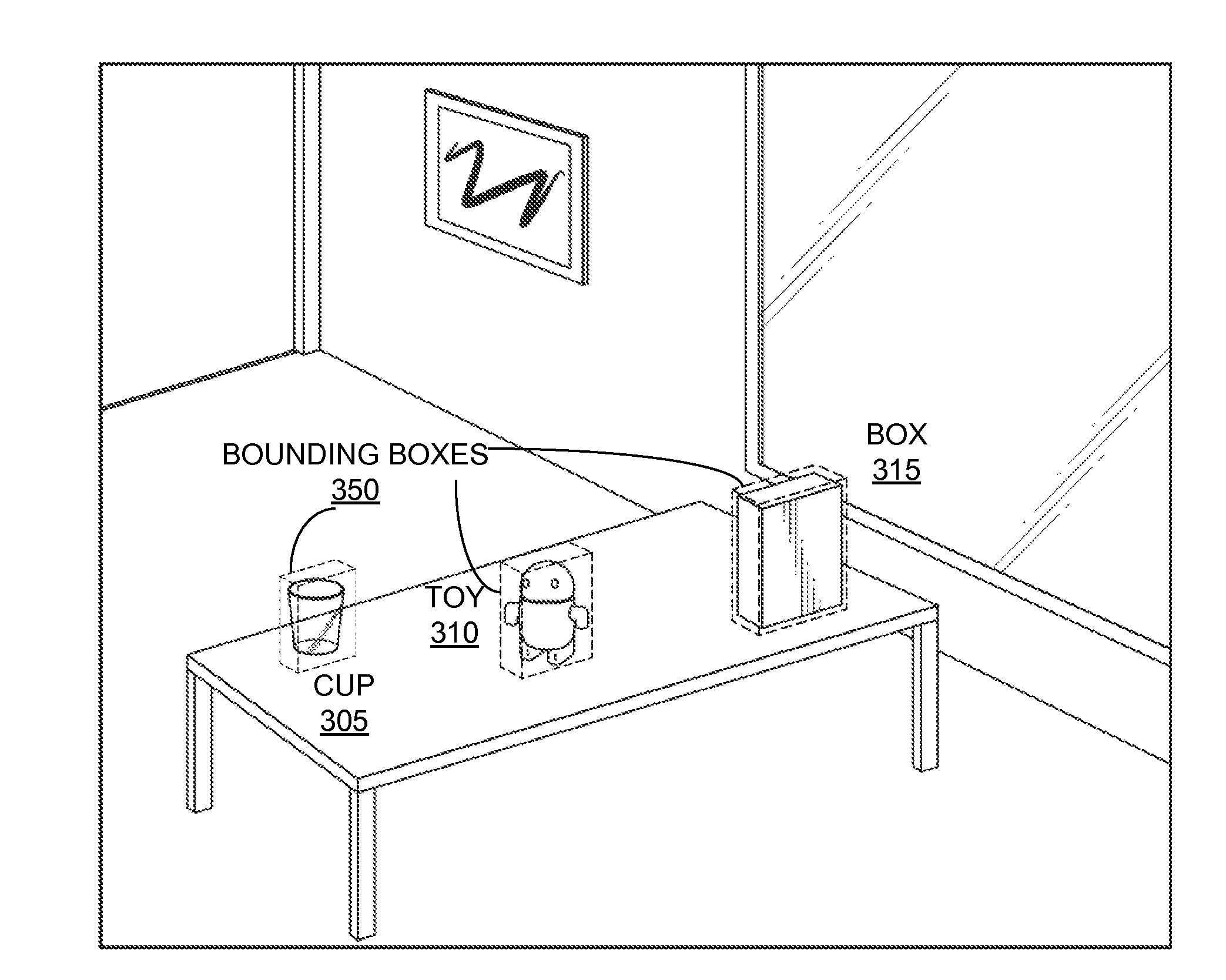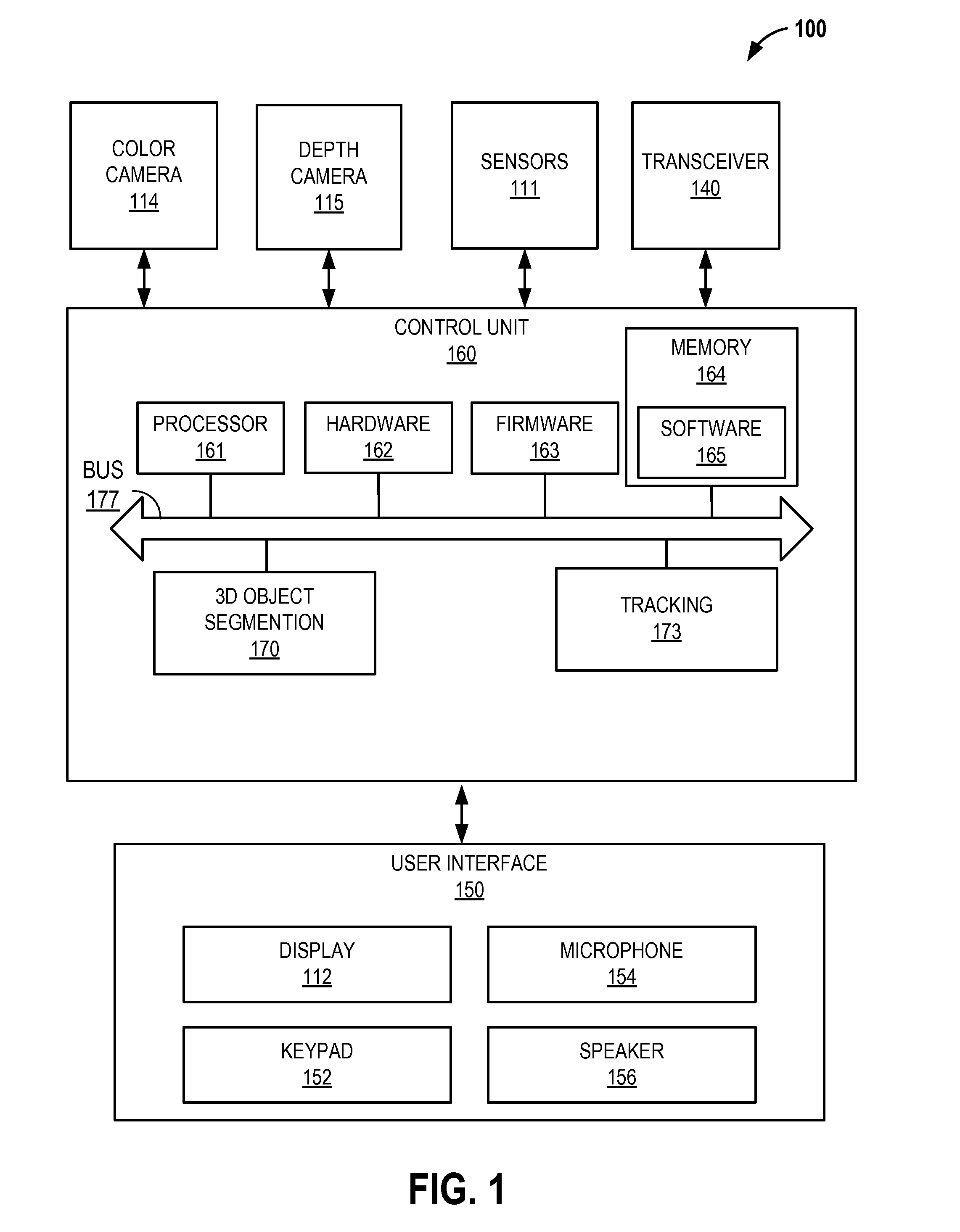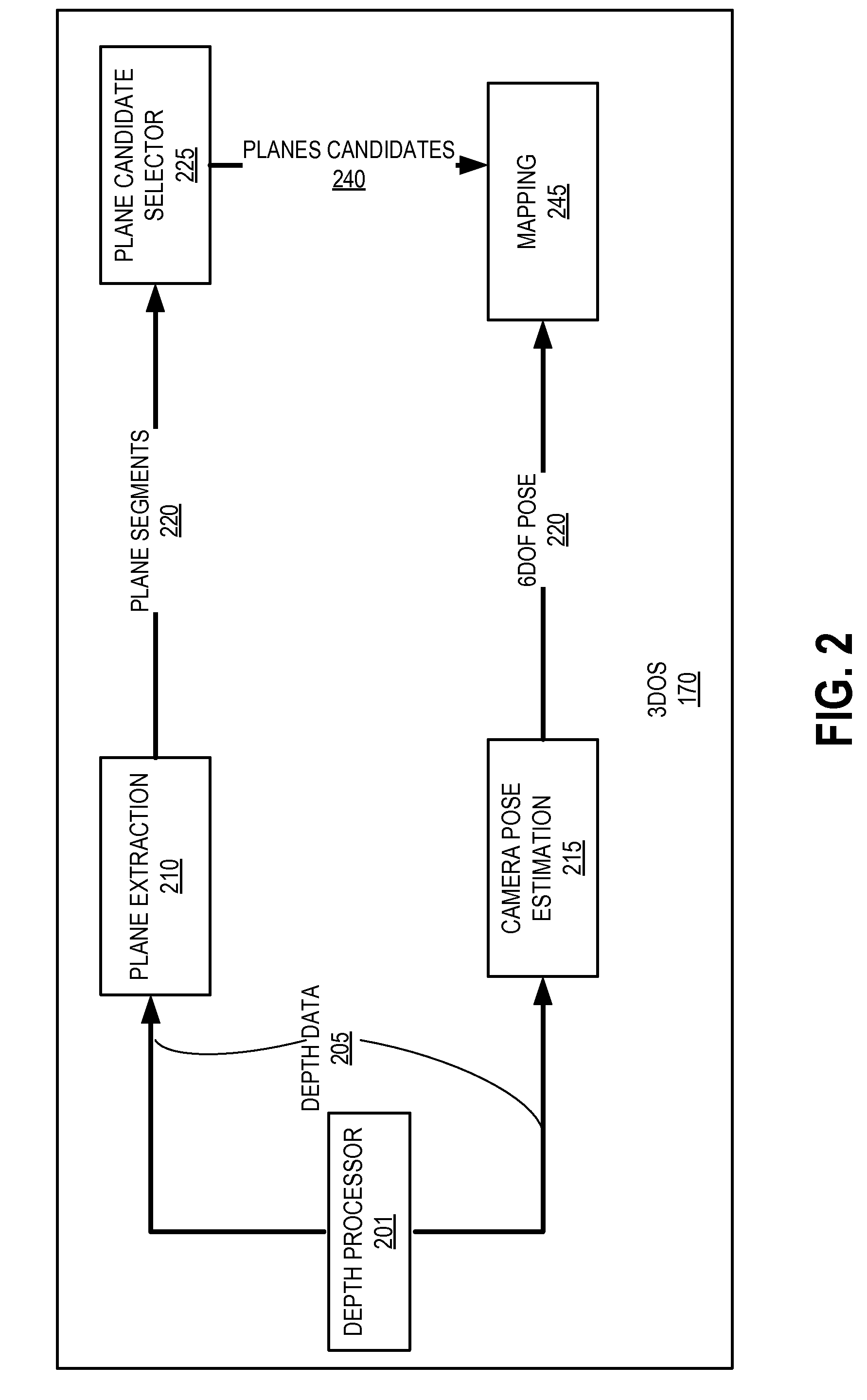3D object segmentation
a 3d object and object technology, applied in image enhancement, image data processing, instruments, etc., can solve the problems of wasting valuable system resources on scene aspects and compromising the quality of final reconstruction
- Summary
- Abstract
- Description
- Claims
- Application Information
AI Technical Summary
Benefits of technology
Problems solved by technology
Method used
Image
Examples
Embodiment Construction
[0022]The word “exemplary” or “example” is used herein to mean “serving as an example, instance, or illustration.” Any aspect or embodiment described herein as “exemplary” or as an “example” is not necessarily to be construed as preferred or advantageous over other aspects or embodiments.
[0023]One method to distinguish between objects is with a brute force method of exhaustive 3D volumetric reconstruction of an entire scene. By determining comprehensive and dense 3D information about voxels in space, segmentation techniques may be applied to determine which voxels are objects. However, this brute force method is computationally intensive and may produce a large number of errors.
[0024]In one embodiment, a 3D object segmentation technique (referred to herein as 3DOS), estimates planar segments and tracks camera position and orientation (pose). By utilizing planar segments and a camera pose from multiple vantage points, a confidence estimate of 3D objects in a scene may be determined. ...
PUM
 Login to View More
Login to View More Abstract
Description
Claims
Application Information
 Login to View More
Login to View More - R&D
- Intellectual Property
- Life Sciences
- Materials
- Tech Scout
- Unparalleled Data Quality
- Higher Quality Content
- 60% Fewer Hallucinations
Browse by: Latest US Patents, China's latest patents, Technical Efficacy Thesaurus, Application Domain, Technology Topic, Popular Technical Reports.
© 2025 PatSnap. All rights reserved.Legal|Privacy policy|Modern Slavery Act Transparency Statement|Sitemap|About US| Contact US: help@patsnap.com



